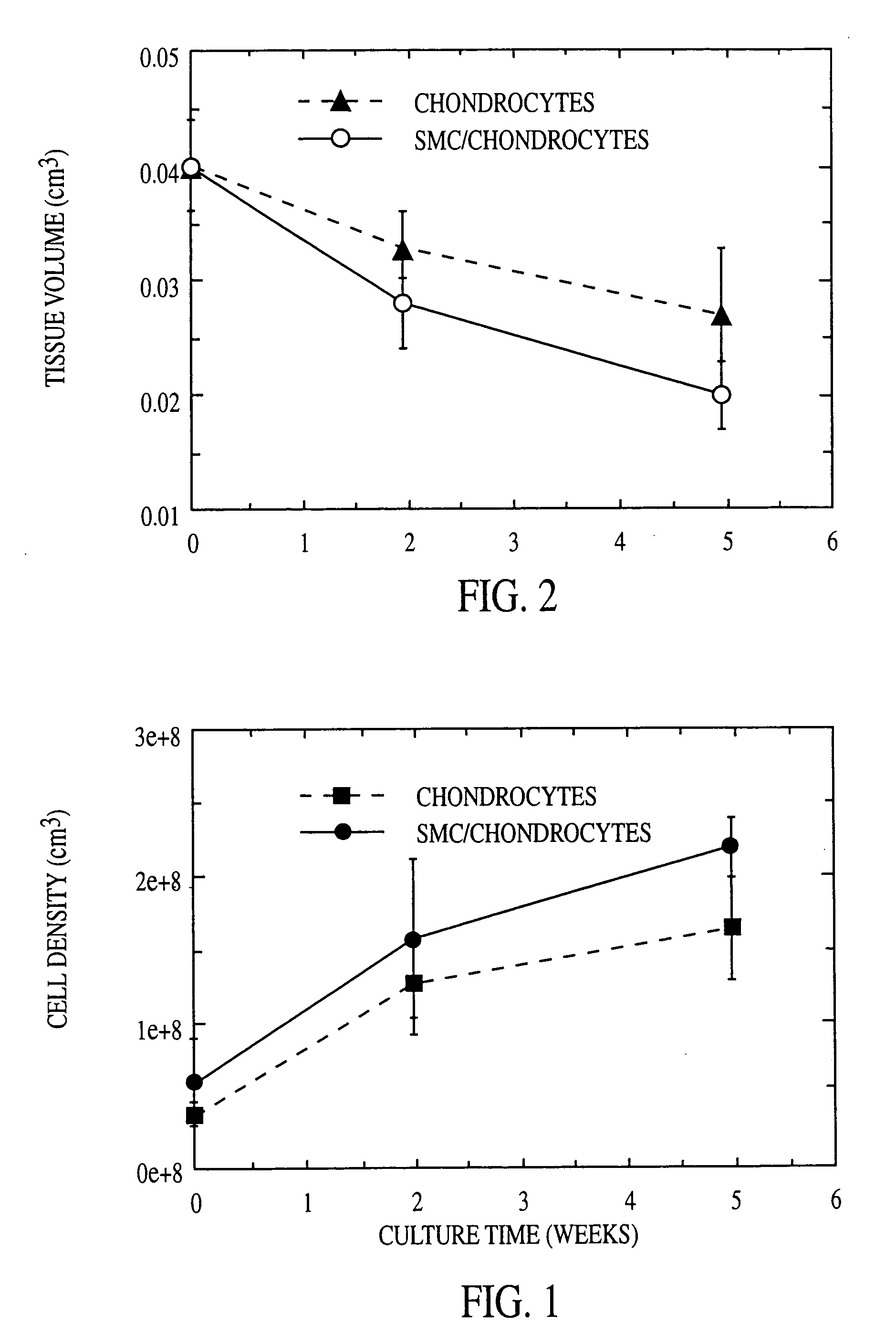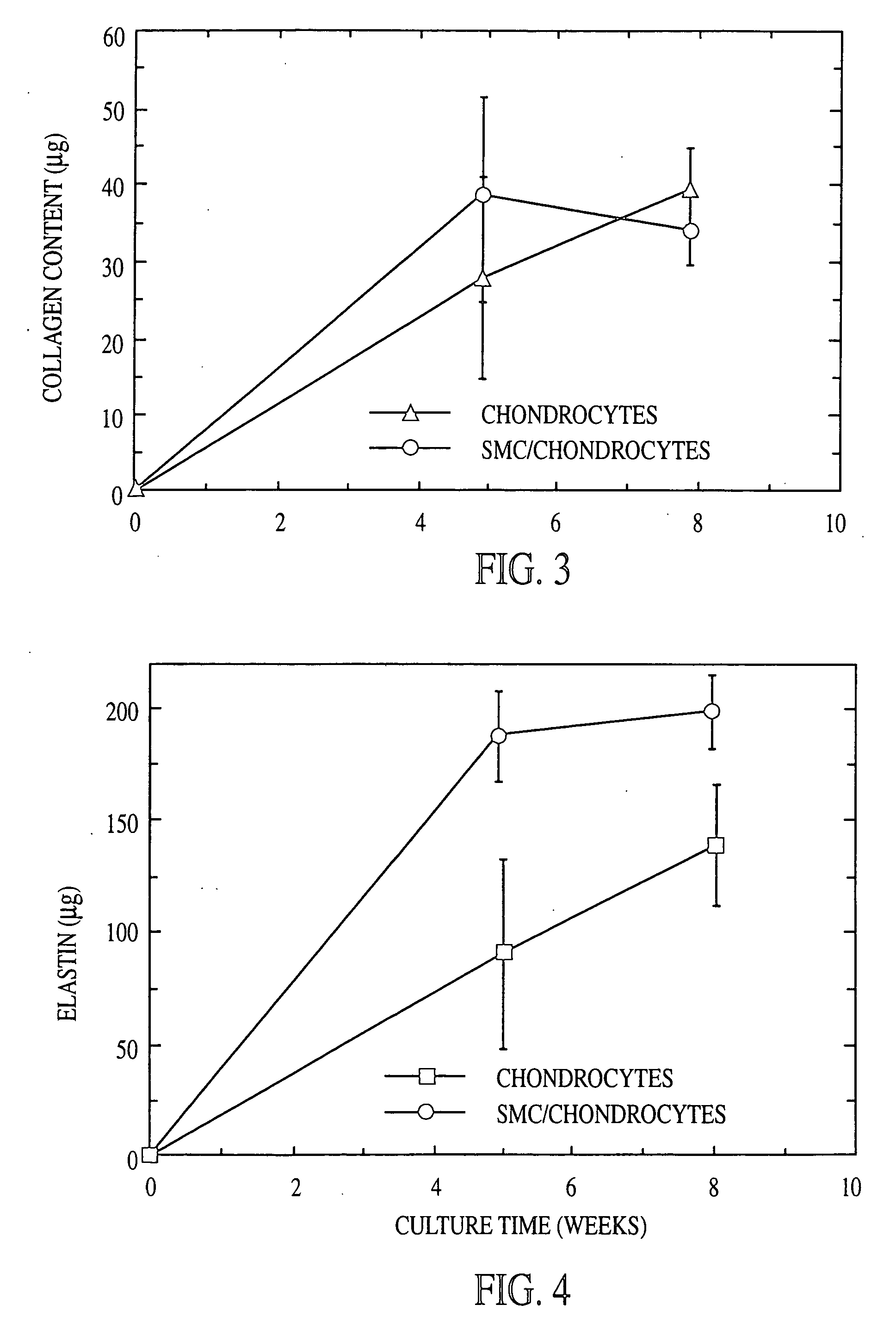Hybrid tissues for tissue engineering
a tissue engineering and hybrid technology, applied in the direction of skeletal/connective tissue cells, biocide, prosthesis, etc., can solve the problems that the cartilaginous tissue of the engineered cartilaginous tissue is too rigid for many soft tissue applications, and achieves rapid shape and model, weakened body structure, and large cavity
- Summary
- Abstract
- Description
- Claims
- Application Information
AI Technical Summary
Benefits of technology
Problems solved by technology
Method used
Image
Examples
example 1
[0064] Tissue Produced by Co-culture of Two Cell Types
[0065] In this study, rat aortic smooth muscle cells (SMCs) and pig articular chondrocytes were co-cultured on fiber-based polyglycolic acid (PGA) matrices (5×5 mm, 2-mm thick) to address this hypothesis. In essence, equal numbers of chondrocytes and smooth muscle cells were seeded together onto a polyglycolic acid fiber-based matrix or chondrocytes alone, as per normal methods. Cells were seeded by agitating the polymer matrices and a cell suspension in 50 ml centrifuge tubes with an orbital shaker. After seeding, cell-polymer constructs were cultured in stirred bioreactors for 8 weeks. The cell-polymer constructs were then maintained in vitro for eight weeks to allow for tissue development.
[0066] At various time points, measurements were made of the volume of the tissue that was formed, the density of cells in the tissue, the collagen and elastin content, and the mechanical properties. The data is shown in FIGS. 1-5. In essen...
PUM
| Property | Measurement | Unit |
|---|---|---|
| Shape | aaaaa | aaaaa |
| Mechanical properties | aaaaa | aaaaa |
| Strength | aaaaa | aaaaa |
Abstract
Description
Claims
Application Information
 Login to View More
Login to View More - R&D
- Intellectual Property
- Life Sciences
- Materials
- Tech Scout
- Unparalleled Data Quality
- Higher Quality Content
- 60% Fewer Hallucinations
Browse by: Latest US Patents, China's latest patents, Technical Efficacy Thesaurus, Application Domain, Technology Topic, Popular Technical Reports.
© 2025 PatSnap. All rights reserved.Legal|Privacy policy|Modern Slavery Act Transparency Statement|Sitemap|About US| Contact US: help@patsnap.com



